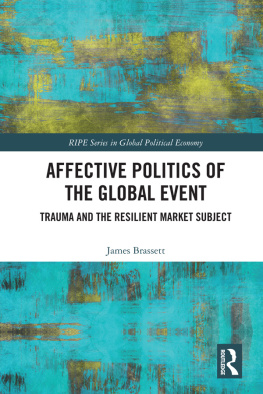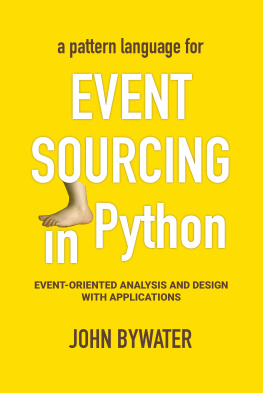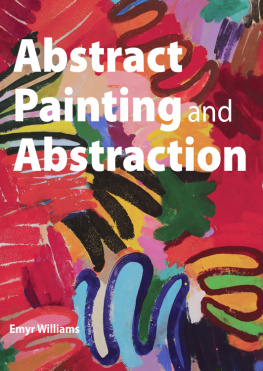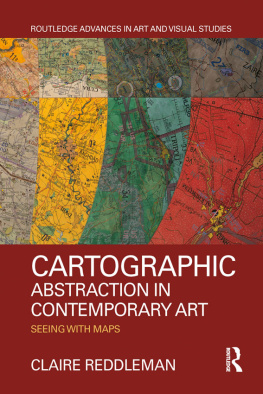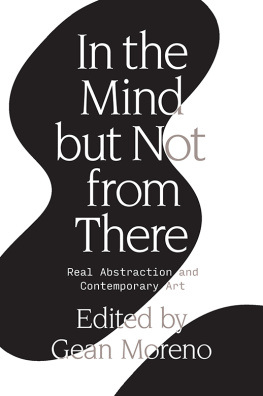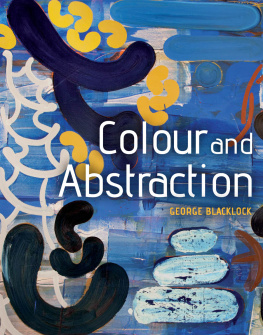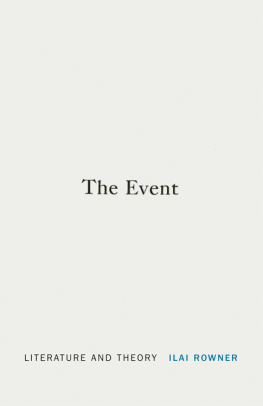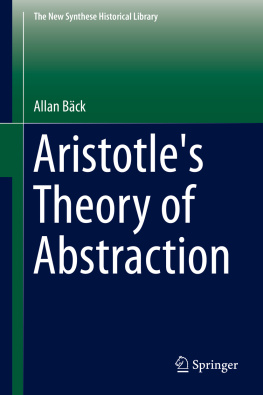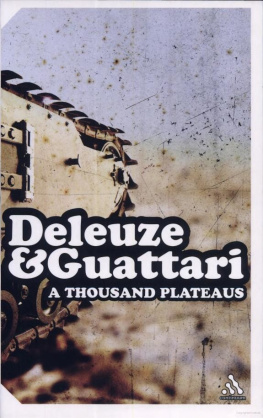Semblance and Event
Technologies of Lived Abstraction
Brian Massumi and Erin Manning, editors
Relationscapes: Movement, Art, Philosophy, Erin Manning, 2009
Without Criteria: Kant, Whitehead, Deleuze, and Aesthetics, Steven Shaviro, 2009
Sonic Warfare: Sound, Affect, and the Ecology of Fear, Steve Goodman, 2009
Semblance and Event: Activist Philosophy and the Occurrent Arts, Brian Massumi, 2011
Semblance and Event
Activist Philosophy and the Occurrent Arts
Brian Massumi
The MIT Press
Cambridge, Massachusetts
London, England
2011 Massachusetts Institute of Technology
All rights reserved. No part of this book may be reproduced in any form by any electronic or mechanical means (including photocopying, recording, or information storage and retrieval) without permission in writing from the publisher.
MIT Press books may be purchased at special quantity discounts for business or sales promotional use. For information, please e-mail or write to Special Sales Department, The MIT Press, 55 Hayward Street, Cambridge, MA 02142.
This book was set in Stone Sans and Stone Serif by Toppan Best-set Premedia Limited. Printed and bound in the United States of America.
Library of Congress Cataloging-in-Publication Data
Massumi, Brian.
Semblance and event : activist philosophy and the occurrent arts / Brian Massumi.
p. cm.
Includes bibliographical references and index.
ISBN 978-0-262-13491-0 (hardcover : alk. paper)
ISBN 978-0-262-29725-7 (retail e-book)
. Experience. 2. Events (Philosophy) 3. Time in art. I. Title. II. Title: Activist philosophy and the occurrent arts.
B105.E9M375 2011
144'.3dc22
2011003566
10 9 8 7 6 5 4 3 2 1
with Erin
life unlimited
Series Foreword
What moves as a body, returns as the movement of thought.
Of subjectivity (in its nascent state)
Of the social (in its mutant state)
Of the environment (at the point it can be reinvented)
A process set up anywhere reverberates everywhere.
The Technologies of Lived Abstraction book series is dedicated to work of transdisciplinary reach inquiring critically but especially creatively into processes of subjective, social, and ethical-political emergence abroad in the world today. Thought and body, abstract and concrete, local and global, individual and collective: the works presented are not content to rest with the habitual divisions. They explore how these facets come formatively, reverberatively together, if only to form the movement by which they come again to differ.
Possible paradigms are many: autonomization, relation; emergence, complexity, process; individuation, (auto)poiesis; direct perception, embodied perception, perception-as-action; speculative pragmatism, speculative realism, radical empiricism; mediation, virtualization; ecology of practices, media ecology; technicity; micropolitics, biopolitics, ontopower. Yet there will be a common aim: to catch new thought and action dawning, at a creative crossing. Technologies of Lived Abstraction orients to the creativity at this crossing, in virtue of which life everywhere can be considered germinally aesthetic, and the aesthetic anywhere already political.
Concepts must be experienced. They are lived.
Erin Manning and Brian Massumi
Acknowledgments
It is difficult to express the extent to which a thinking and writing process echoes with other voices, in concord, counterpoint, and at times happy cacophony. It would be impossible to express my gratitude and indebtedness to all who have contributed, in their many welcome manners, to this projects taking shape. I wouldnt know where to begin. The books roots intertwine with the distant origins of the earlier Parables for the Virtual, nearly ten years its junior, itself in entangled gestation nearly as long before that. Neither would I know how to end, so wreathed is this books completion in the germinating tendrils of an embarrassing number of concurrent books in progress, most of which will doubtless die on the proliferating branch. My thanks, first of all, go to Erin Manning, for living day to day with my inability to begin or end and for understandingand helping me to truly understandthe joy that can come with being always in that proliferating middle. It is also due to her that my middling has become endowed with a milieu. Her founding the SenseLab, and her generously imaginative tending of its growth and transformations, has given me an environment for thought-in-action whose contribution to my life and work has been inestimable. Thank you, Erin, for the intensity of thought, creative joy, and concern for the event you bring to everything you do, and most of all to the life we share. My heartfelt thanks as well go to the SenseLabs participants, past and present, students, activists, artists and professors, local and international, without whose own generous contributions of ideas and energy the SenseLab could never have borne fruit. A collective thanks goes to the commenters and questioners I have encountered along the long and intertwining pathfrom the students I have had in Canada, the United States, and Australia over the course of my peripatetic teaching career, to participants in many a seminar and lecture in a splay of locations. Your traces inhabit these pages. I would like to extend individual thanks to those who have so generously taken the time to provide me with their feedback on the drafts: Lone Bertelsen, Erik Bordeleau, Christoph Brunner, Kenneth Dean, Didier Debaise, Sher Doruff, Jonas Fritsch, Thomas Lamarre, Erin Manning, Arjen Mulder, Anna Munster, Andrew Murphie, John Protevi, Felix Rebolledo, Steven Shaviro, Isabelle Stengers, and the evaluators for the MIT Press. Finally, to my son Jesse: thank you for not taking me seriously and keeping me on my toes.
Earlier versions of chapters 1, 2, and 3 appeared in the following publications:
Chapter 1: The Pragmatist Imagination: Thinking about Things in the Making, ed. Joan Ockman (Princeton: Princeton Architectural Press, 2000), 160167 (under the title The Ether and Your Anger: Towards a Pragmatics of the Useless).
Chapter 2: Inflexions: A Journal for Research-Creation, no. 1 (2008), available at www.inflexions.org/volume_4/issues.html#i1. An earliera bridged version appeared in Joke Brouwer and Arjen Muller, eds., Interact or Die! (Rotterdam: V2/NAi, 2007), 7097.
Chapter 3: Diagram Work, ed. Ben van Berkel and Caroline Bos, special issue of ANY (Architecture New York), no. 23 (1998): 4247.
An earlier version of portions of chapter 4, first movement, appeared in Joke Brouwer and Arjen Mulder, eds., Information Is Alive: Art and Theory on Archiving and Retrieving Data (Rotterdam: NAi Publishers, 2003), 142151 (under the title The Archive of Experience).
This work was generously supported by a research grant from the Social Sciences and Humanities Research Council of Canada.
Introduction: Activist Philosophy and the Occurrent Arts
Somethings doing (James 1996a, 161). That much we already know. Somethings happening. Try as we might to gain an observers remove, thats where we find ourselves: in the midst of it. Theres happening doing. This is where philosophical thinking must begin: immediately in the middle (Deleuze and Guattari 1987, 2123, 293).
Whats middling in all immediacy is an experience of activity (James 1996a, 161). The fundamental concepts are activity and process (Whitehead 1968, 140). Bare activity, as we may call it, means the bare fact of event or change (James 1996a, 161).
In bare point of fact, that is where everything, not just philosophy, begins. Activity and change are the matter of fact (Whitehead 1968, 146). Change taking place is a unique content of experience (James 1996a, 161).
Next page

